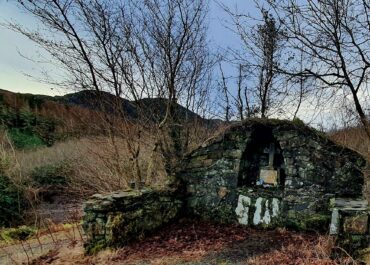Ritual site - holy well, An Baile Úr, Co. Donegal
Near Ballymichael National School in Fanad, County Donegal, a small opening in a steep hillside marks St. Patrick's Well, one of two wells in the area bearing the saint's name.
Ritual site - holy well, An Baile Úr, Co. Donegal
This modest holy well consists of an artificial cavity partially covered by a flat stone slab, its simple construction typical of Ireland’s numerous sacred springs. The site has drawn pilgrims for generations, with local traditions maintaining that stations, or ritual prayers and devotions, are still performed here each 17th March on St. Patrick’s Day.
The well was first formally documented by scholar Ó Muirgheasa in 1936, who noted both this site and another St. Patrick’s Well in nearby Ballylar. His account, preserved in the Archaeological Survey of County Donegal, captures a living tradition that connects modern worshippers with centuries of religious practice. The survey, compiled by Brian Lacey and his team in 1983, catalogued this and hundreds of other archaeological sites throughout the county, from prehistoric monuments to 17th century structures.
Like many Irish holy wells, this site represents a fascinating blend of Christian devotion and much older water veneration practices. The artificial enhancement of what may have been a natural spring, the protective stone slab, and the continuation of seasonal rituals all speak to the enduring significance of these places in Irish spiritual life. Though modest in appearance, St. Patrick’s Well at An Baile Úr remains an active part of Donegal’s religious landscape, where ancient customs persist alongside modern faith.


